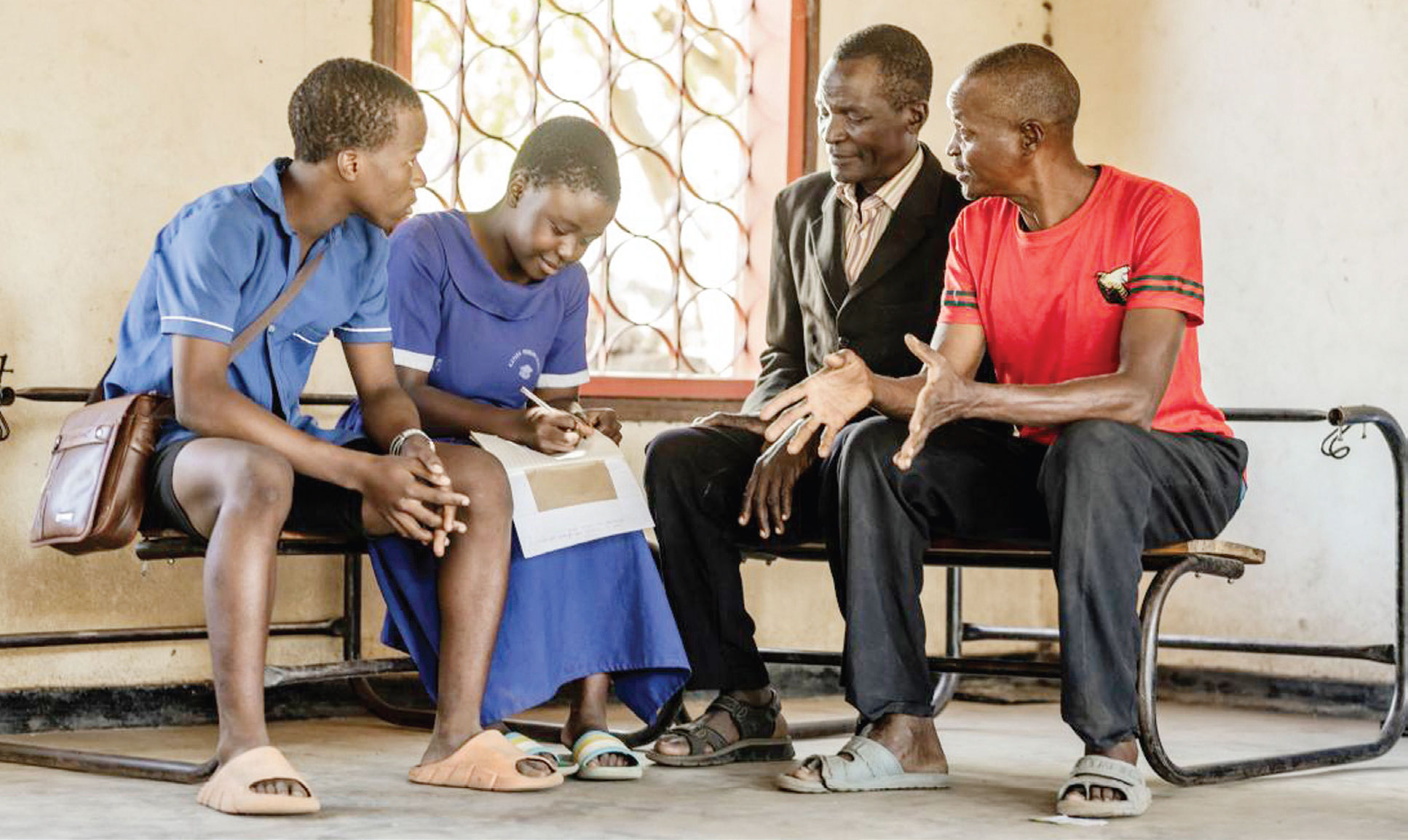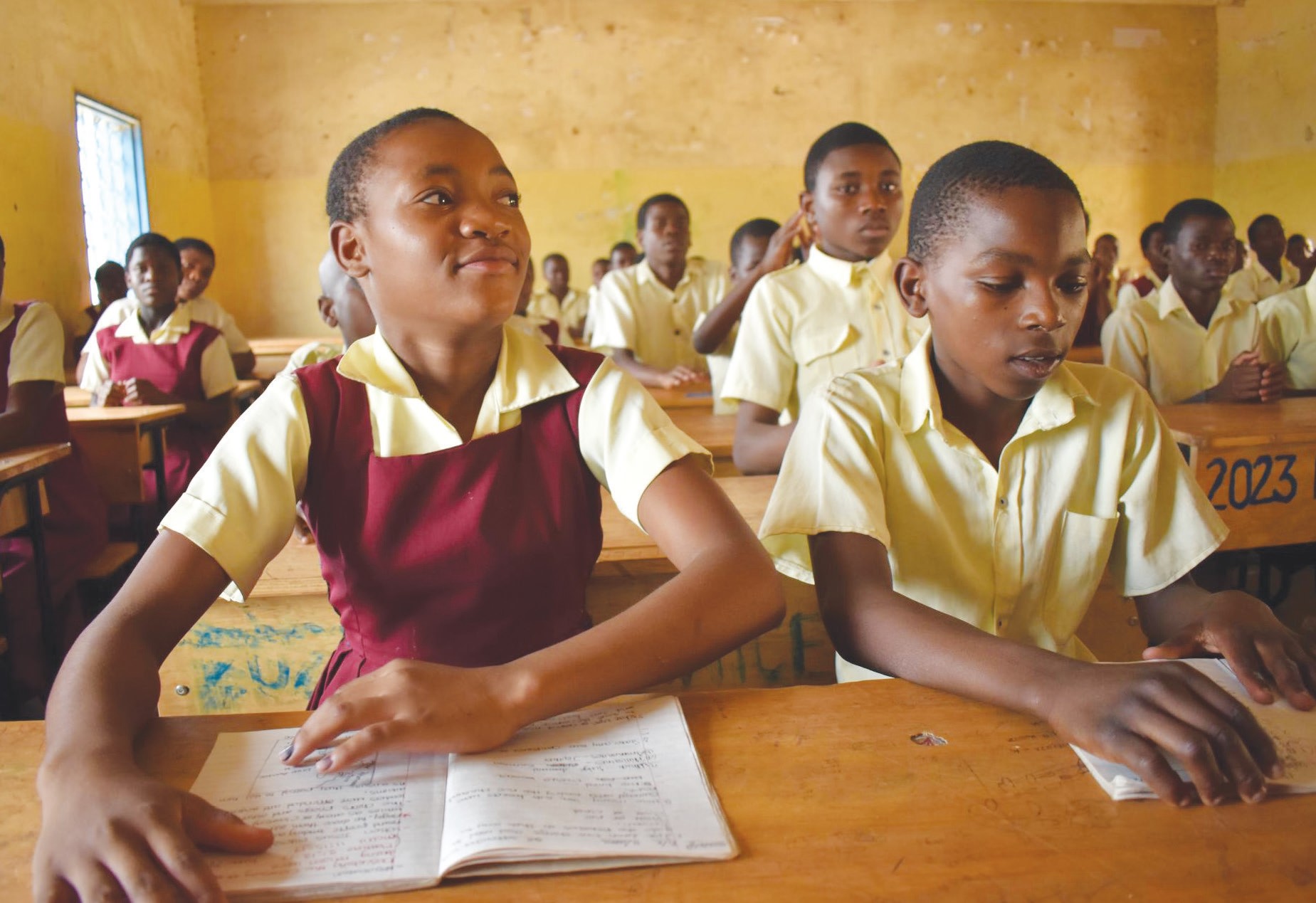Fighting child labour with education
 Rhoda Mtete’s future now looks bright. The 14-year-old girl, from Mchinji, was forced by her parents to leave school while in Standard Seven.
Rhoda Mtete’s future now looks bright. The 14-year-old girl, from Mchinji, was forced by her parents to leave school while in Standard Seven.
“My parents said I should be helping them in tobacco farming. They told me education is not necessary for girls,” Rhoda said.
Her parents are tenants in a tobacco estate.
Rhoda, who aspires to be a nurse, has the Child Labour Elimination Action for Real Change (Clear) project to thank for taking her back to school and convincing her parents that school is important to every child.
She is now in Standard Eight, and took position one in the end of first term examinations.
Clear is implementing a four-and-a-half year project aimed at eliminating child labour in tobacco growing districts of Mchinji, Ntchisi and Rumphi.
But Rhoda is just a small fraction of many children that are involved in child labour.
In sub-Saharan Africa, it is estimated that 40 percent of all children aged between five and 14, or about 48 million children depend on child labour for survival, according to the International Programme on the Elimination of Child Labour (Ipec).
“Agriculture is a major employer of child labour in Africa. Ploughing, fertiliser, pesticide application and harvesting routinely involve children with their families,” says Ipec.
And Malawi is said to be one of the countries with the highest incidence rates of child labour in southern Africa. A 2008 report by Plan Malawi estimated that over 78 000 children in the country are victims of child labour.
This is why in 2002, the International Labour Organisation (ILO) launched the World Day Against Child Labour as a way to highlight the plight of these children. Commemorated on June 12, this year’s theme is ‘No to Child Labour in Domestic Work’.
According to ILO, millions of girls and boys around the world are engaged in work that deprives them of adequate education, health, leisure and basic freedoms, thereby violating their rights.
“Of these children, over half are exposed to the worst forms of child labour such as work in hazardous environments, slavery, or other forms of forced labour,” reads information from ILO website.
Ipec describes child labour as the employment of children in a manner that deprives them of their childhood, and is harmful to their physical and mental development.
“These children barely attend school. The result is the continuation of the tenancy cycle bequeathed from their parents. These children are likely to have children who will end up like them. The poverty chain can hardly be broken in this context,” said Martin Mazinga, a social worker for Catholic Development Commission in Malawi (Cadecom), in an earlier interview with The Nation.
Surprisingly, Malawi is a signatory to the UN Convention on the Rights of the Child (CRC), which was adopted by the United Nations in 1989. The Convention includes a section on the need to protect children from work that is dangerous, or might harm their health or their education.
Malawi has also ratified the Minimum Age Convention (ILO Convention No. 138) and the Convention on the Worst Forms of Child Labour (ILO Convention No. 182). The Convention on the Worst Forms of Child Labour (ILO Convention No. 182, 1999) adopts 15 as the minimum age of employment.
Even at national level, the Malawi Constitution bars employment of children below the age of 16, while the Malawi Employment Act of 2000 condemns the employment of children below the age of 14. Added to this is the Child Care, Protection and Justice Act of 2010.
Section 23 of the Constitution of Malawi accords children the right of protection from any work that is of a hazardous nature or any work that may prejudice their attendance at school or inflict any harm on their health and development. There are also a number of policies that support interventions against child labour, such as the National Code of Conduct developed by Unicef and the Ministry of Women and Child Development.
So, with all these legal provisions, why is child labour still prevalent?
Eye of the Child executive director Maxwell Matewere says most child labour laws are weak and in certain ways, contradict each other.
“The Child Care, Protection and Justice Act of 2010 says a child is anyone below the age of 16. The Constitution bars employment of persons below the age of 16. The 2000 Employment Act condemns the employment of person under the age of 14. We need to harmonise these ages,” he argues.
Matewere pointed out the absence of a law that supports the interest of parents in upbringing their children, as another challenge.
“Most parents know that child labour is illegal, but are not able to distinguish between child work and child labour,” he says.
Clear project officer responsible for education, Dan Msiska, said they established that poor infrastructure in most schools, which leads to school drop outs, contributes to child labour.
“Our monitors are working tirelessly to rescue children from child labour and bring them back to school,” Msiska said.
During a recent journalists workshop on child labour in Lilongwe, Principal Secretary (PS) in the Ministry of Labour Wezi Kayira, said there is need for sensitisation on issues of child labour, with the media playing a role in advocacy to ensure it is eliminated.
“If we are to eliminate child labour, we expect journalists to be in the forefront advocating for these issues for the betterment of our children,” Kayira said.
The World Day Against Child Labour provides an opportunity to gain further support of individual governments and that of the ILO social partners, civil society and others, including schools, youth and women’s groups as well as the media, in the campaign against child labour.





